An overarching theme of my late twenties has been discovering how complex and meaningful a thing is, that I had for the span of all my 27 years taken for granted as something inherent to living an average life. Does that make any sense? You grow up with friends from school seemingly built-in, there are sheets on your bed in your favorite color pink, and your mom buys you an obnoxiously-colored Fairisle sweater from Old Navy that you’ll wear with your sparkly denim skirt and white tights at church. The thing I’ve realized is that I was wrong in my estimation that none of these were special. The sweater for example, is a contemporary and low-budget manifestation of a centuries-old practice, which employed innumerable laborers and continues to represent an art form that originated from global trade and unprecedented innovation. To me, it is a miracle of fiber art, and the fact that we have so much access to it tricks us into believing otherwise. I’m on my Miranda Priestly soapbox for real!
That specific shade of cerulean and friendship that feels like family and soft cotton sheets on my bed and the Fairisle sweater I throw on when the NY wind is biting are sacred and meaningful and much richer than I might’ve believed a few years ago. It is exceptional to have the things we have.
One of the greatest things about studying history is the ceaseless perspective. Nothing like learning about how many hours women devoted to darning their socks to make you grateful for the 20 hole-less pair that sit in your top dresser drawer. While doing my research for this, and any other letter I post here, I inevitably learn so much about how say, crochet became life-saving employment in Ireland during the famine, and my appreciation for whatever the topic is grows immeasurably. The Fairisle sweaters I saw stacked on the shelves of Old Navy, Gap and J.Crew represent so much more than it seemed to a 13 year old who desperately wanted a boyfriend and boobs. To me now, they are high art made accessible where they were previously effing nerdy.
In 2021, I moved to Edinburgh for my Master’s degree and was engulfed in a culture so rooted in and proud of its crafting traditions that I had no choice but to buy in (I may have bought in a little too energetically but that is the study abroad experience summarised - haha whoops used the ‘s’ as they do in the UK…)
In Scotland, a dribbling rain that settles in your bones and a wind that doesn’t let you forget how wet you may be, are constant. Surrounded by extinct volcanoes, Edinburgh is a city of adventurers if not just good-natured outdoorspeople who love a long walk through town, thus, they dress to meet the conditions without any overreaction (I’m thinking of the head to toe sleeping-bag parkas I’m about to see in Fort Greene Park pretty soon). On a typical blustery Scottish day you will see wool. Wool coats and wool beanies and wool mittens and wool sweaters. If you take anything away from this letter, it should be that wool is the most miraculous of fibres (oh! there it is again). First of all, it is ‘smart’; when it comes to water, wool can absorb vapor and push it out so that it evaporates almost instantly. As opposed to synthetics, it actively reacts to the body’s temperature, insulating against the cold and breathing when it’s warm. It is the most sustainable fiber in the world AND will decompose in ideal conditions in 3-4 months,1 why we wear anything else is a mystery. Wool has been used to make garments for millennia, no doubt because of its innate innovative qualities, and it takes to dye incredibly well - fun!
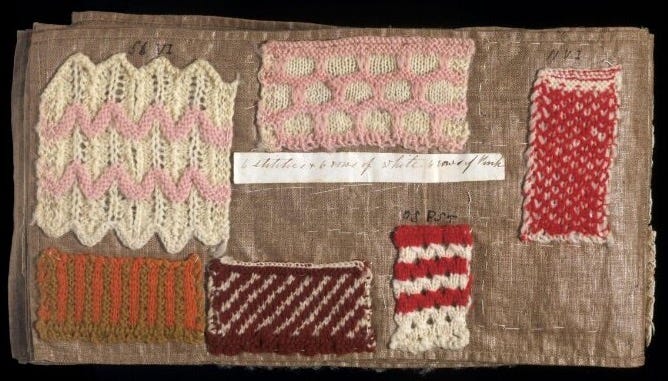
Look at this page from a knitting sample book from the mid 19th c.2 Isn’t that awesome. Within the book, a girl called Elizabeth Hume has saved swatches of her knitting ranging from fine lace to solid wool using both undyed and colorful Shetland yarn. 200 years ago this girl was knitting the same Fairisle vertical stripes that I just knitted to make my friend’s Christmas mittens. That is fucking awesome. Knitting with more than a single color was not common in the UK until the 19th c. Allegedly, and I mean really seriously allegedly, Spanish sailors fleeing North after a brutal battle with the English in 1588, wrecked ashore the tiny remote island of Fair Isle off the coast of Scotland. If we’re to believe this theory, the Spaniards who survived the wreck brought ashore knitwear featuring multi-colored patterns with which the craftspeople of Fair Isle were unfamiliar. The diffusion of complicated color work may have also resulted from trade with Scandinavia, but how romantic to think this came from this:
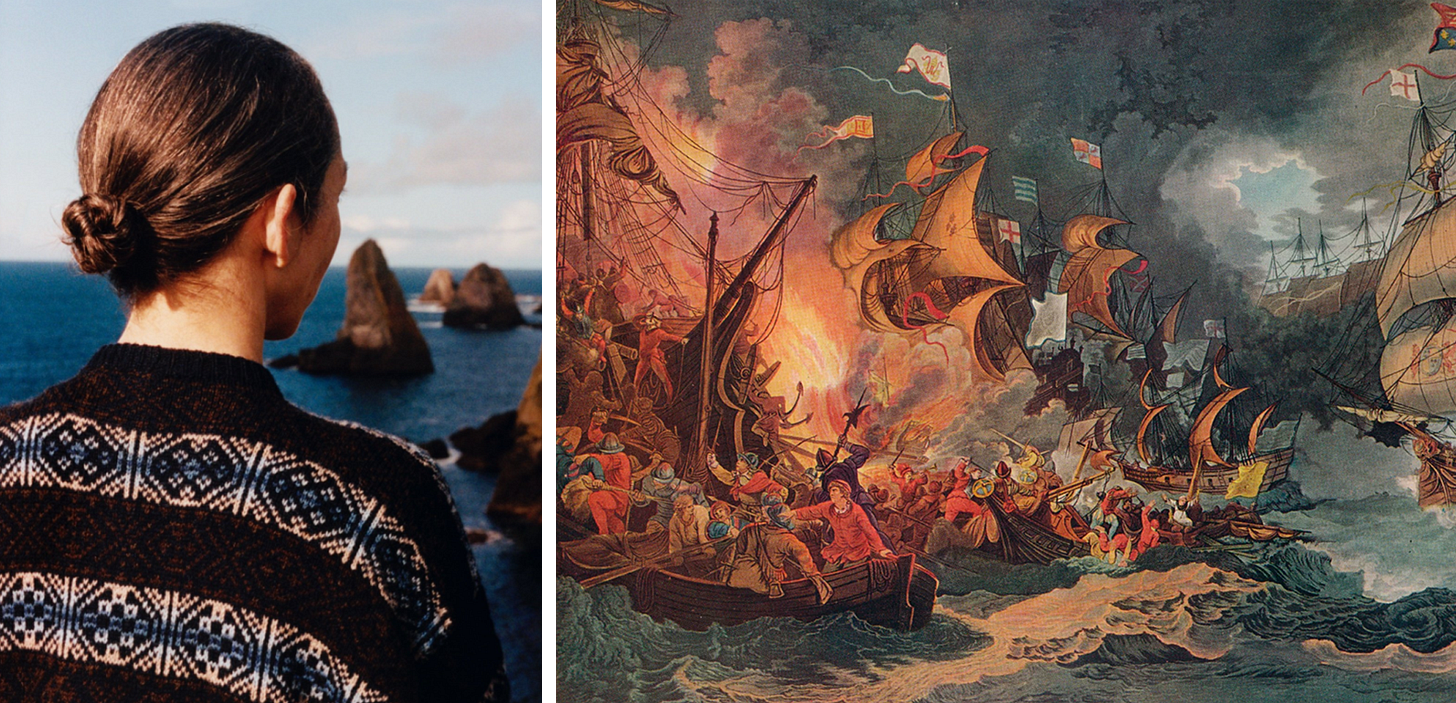
The specific characteristics that make Fairisle unique were indeed developed on the island over generations. The key difference between Fairisle colorwork and intarsia is the use of ‘floats’, which make whatever your knitting twice or THRice the thickness of a piece using a singular color, beautiful and incredibly practical for a people constantly battered by wind and rain. Essentially, this is done by holding each strand you are using as you knit the row, swapping colors as the pattern dictates, so, if on the right side of the piece you are seeing brown, on the inside, you will see a blue float, waiting for its turn.
Fairisle colloquially evokes a broad range of colors, patterns, shapes etc. But, true, authentic garments from Fair Isle proper showcase few distinct motifs and are knitted by masters who live on or near the island. These garments are incredibly hard to come by, as they’re knitted completely by hand - often the artists only sell to those who buy in-person, so you won’t find much online. I’ve gathered a collection of gorgeous examples you can shop, looking specifically for 1. pure wool 2. a rich story 3. practical design (as I find it)
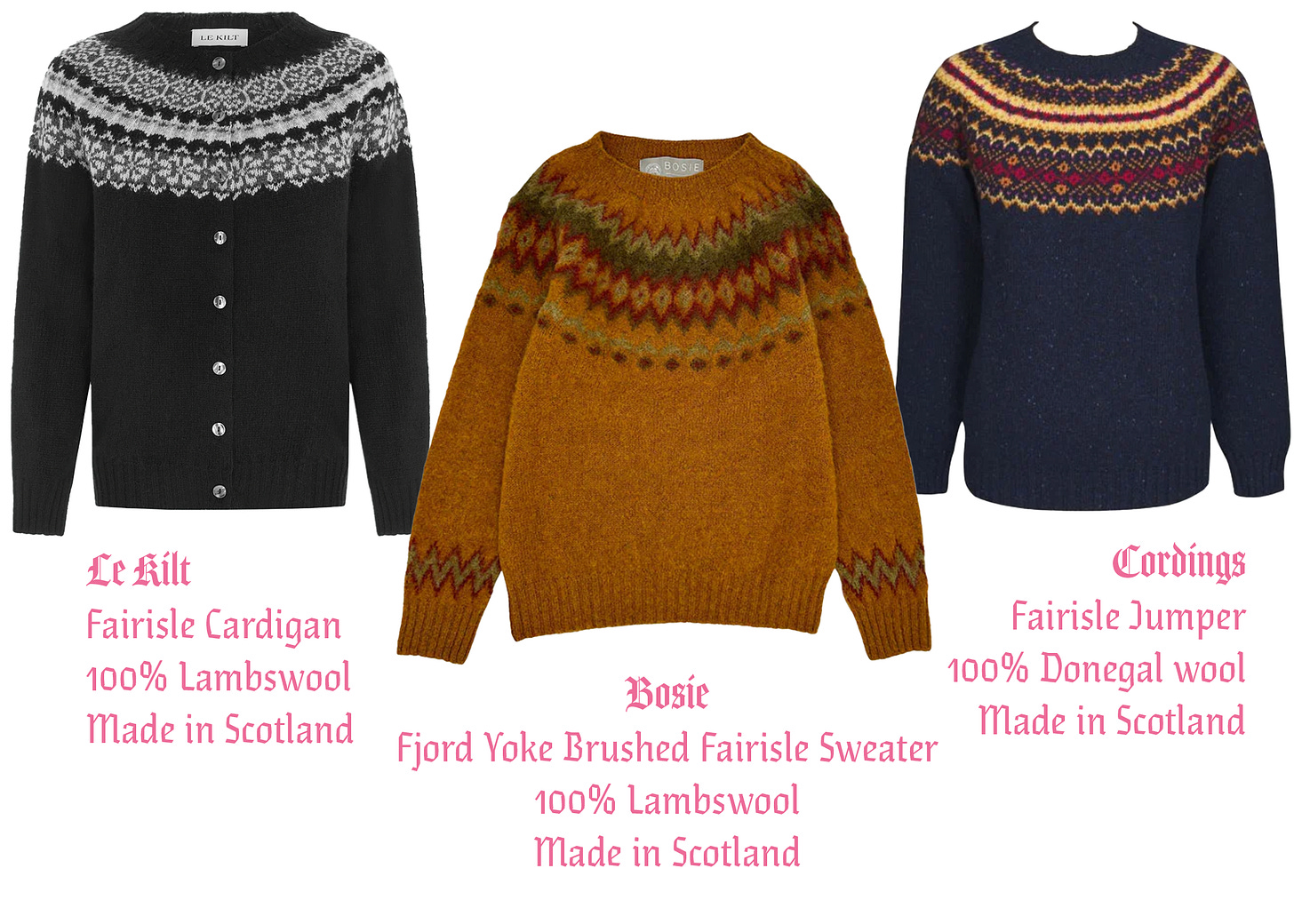
And a special feature for the Real Deal, a traditional fisherman sweater with 19th century Fairisle motifs, completely hand knit and constructed in Scotland using 100% undyed lambswool. A heritage piece if I’ve ever seen one. This is what I’ll travel to Scotland to purchase once I’ve become incredibly wealthy from my…job a nonprofit…you heard me.
Now, what I’ll leave you with are a few photos of my current project. I’m using the Pelican Sweater pattern by Isager. My mom got me her most recent pattern book for Christmas and it is chock-full with Fairisle. This is some of the trickiest knitting I’ve ever done, but once I get the hang of it, the pelicans aren’t too difficult to knit out. I’m so excited that I’ve gotten this far, it might propel me to finish this by springtime. hahahaaaaa…………………while it is arduous, I am learning about the time, concentration, skill and patience that a piece of art commands and that, to me, is invaluable.
Love you!!!
xxx,
Isabel
https://www.wildernessscotland.com/blog/scottish-wool-textiles/
https://collections.vam.ac.uk/item/O108618/sample-book-elizabeth-hume/





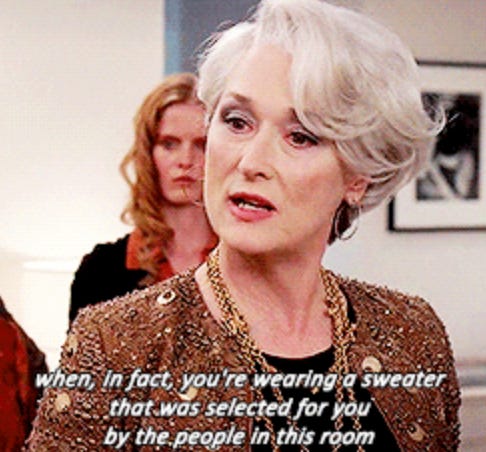
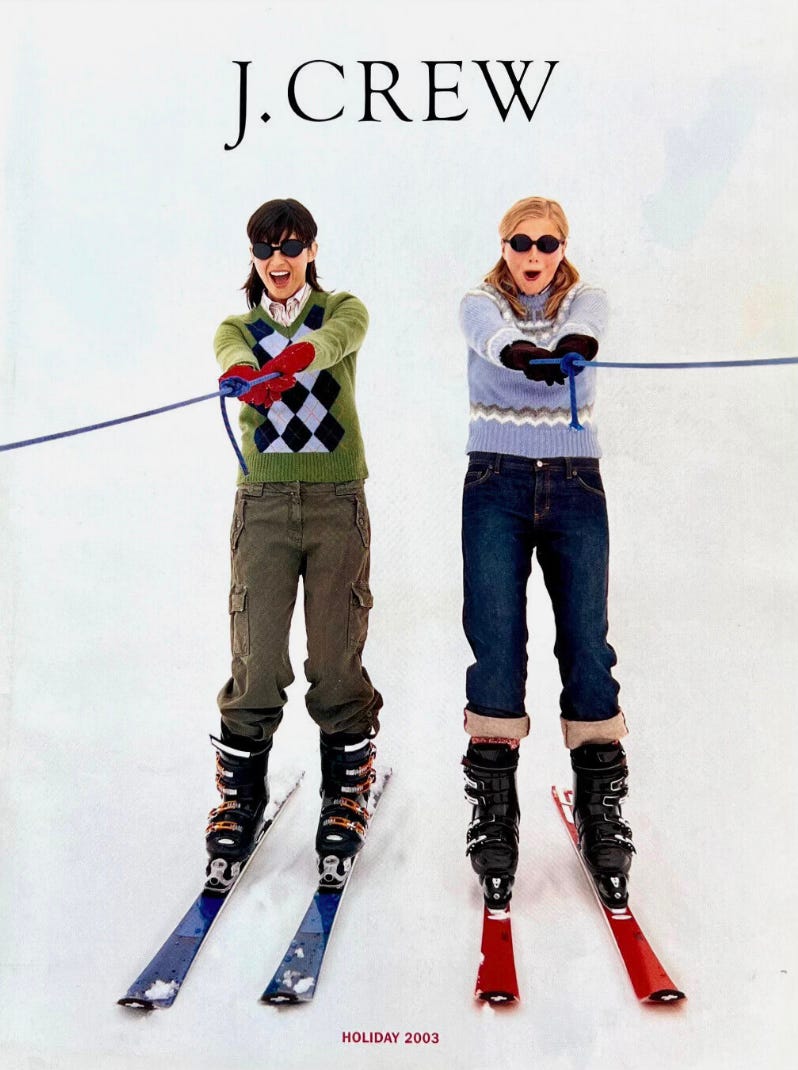
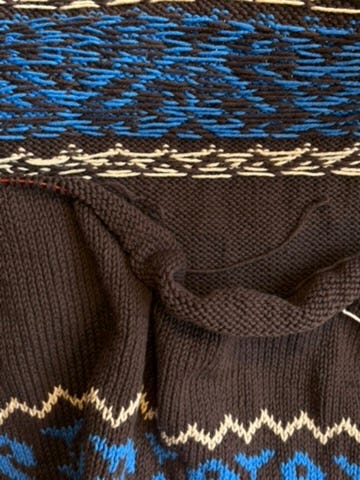
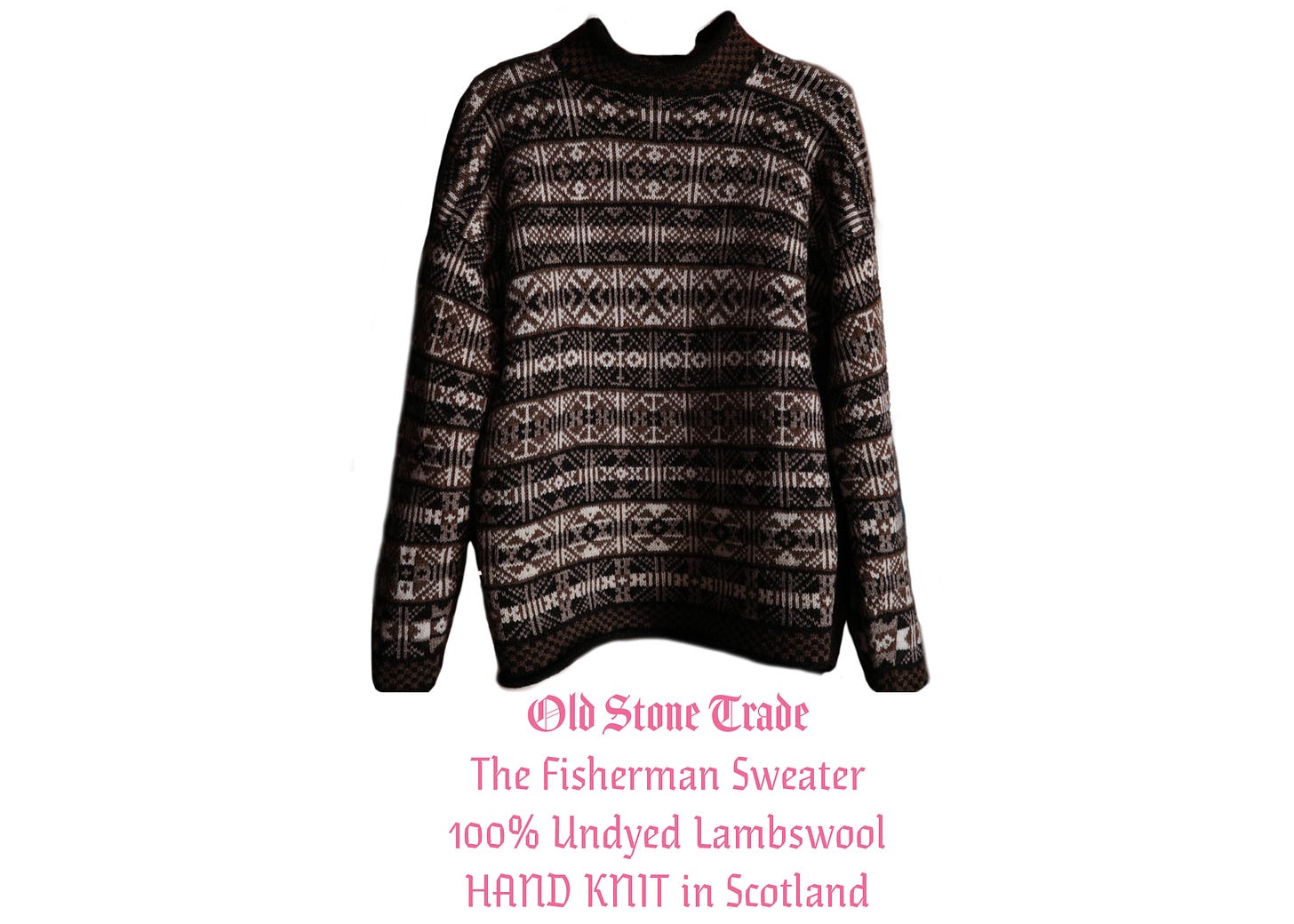
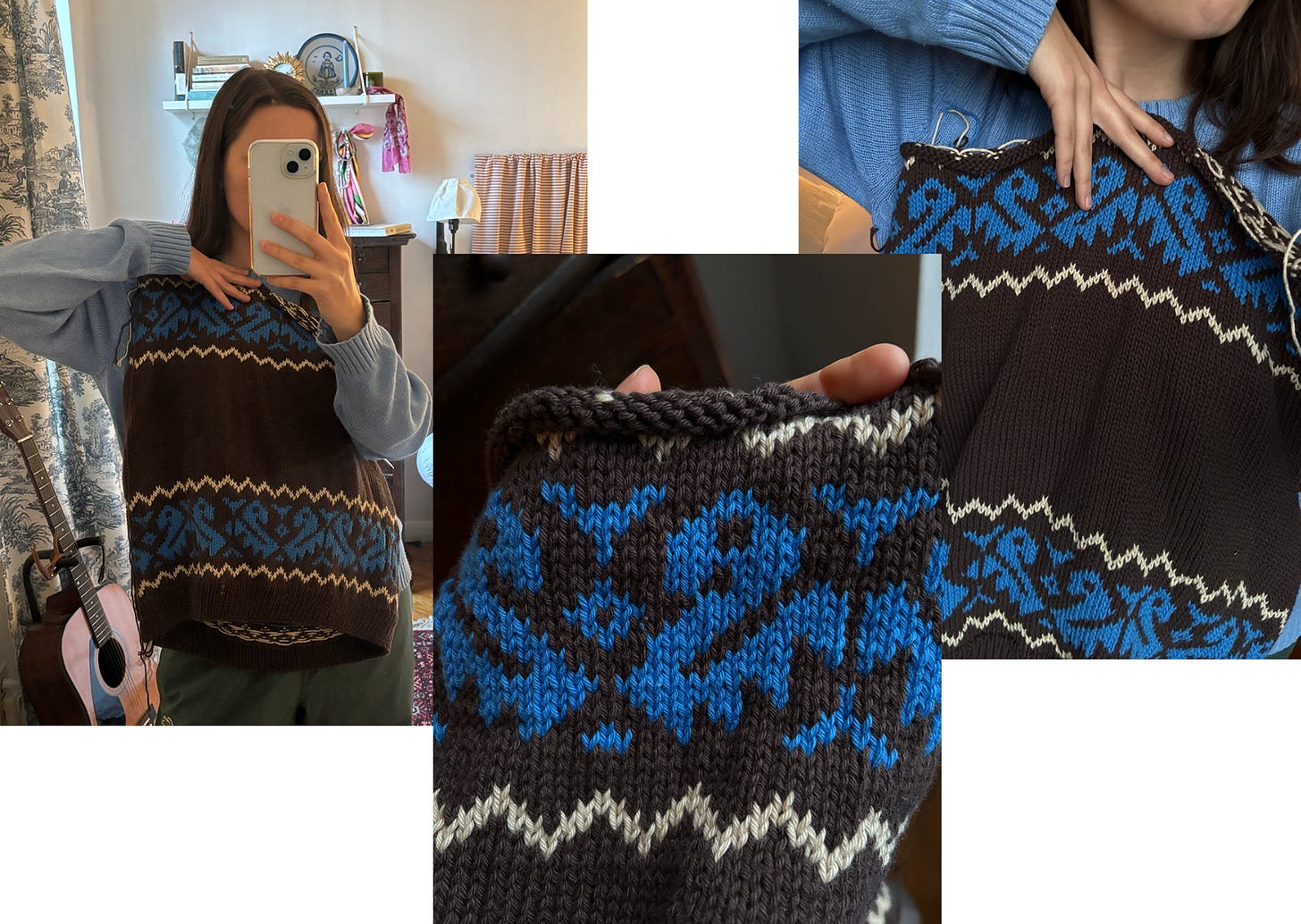
I love the idea of the blue yard "flat" on the inside, just quietly hanging out, waiting for it's turn <3